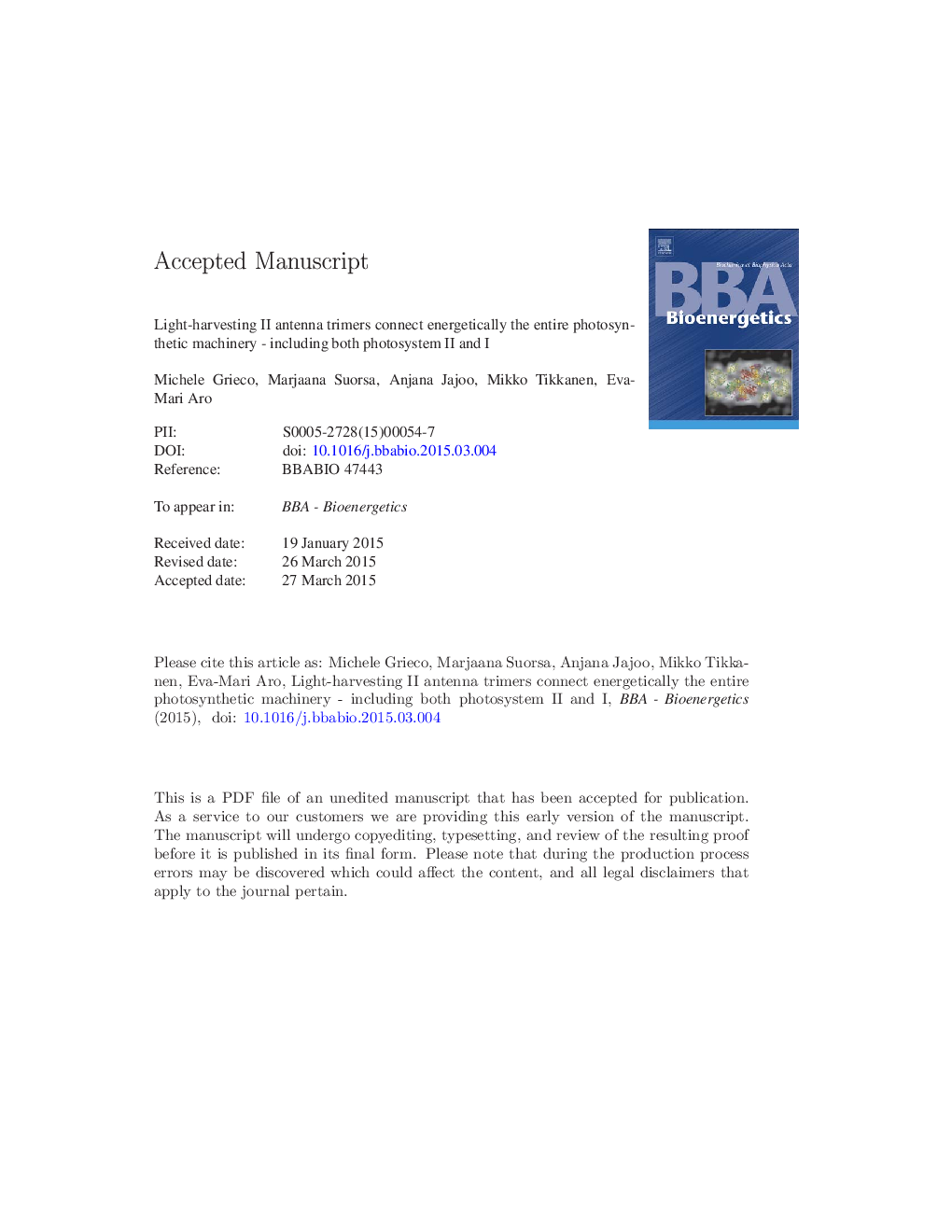| Article ID | Journal | Published Year | Pages | File Type |
|---|---|---|---|---|
| 8298727 | Biochimica et Biophysica Acta (BBA) - Bioenergetics | 2015 | 42 Pages |
Abstract
In plant chloroplasts, the two photosystems (PSII and PSI) are enriched in different thylakoid domains and, according to the established view, are regarded as energetically segregated from each other. A specific fraction of the light harvesting complex II (LHCII) has been postulated to get phosphorylated by the STN7 kinase and subsequently to migrate from PSII to PSI as part of a process called 'state transition'. Nevertheless, the thylakoid membrane incorporates a large excess of LHCII not present in the isolatable PSII-LHCII and PSI-LHCII complexes. Moreover, LHCII phosphorylation is not limited to a specific LHCII pool and “state 2” condition, but is found in all thylakoid domains in any constant light condition. Here, using a targeted solubilization of pigment-protein complexes from different thylakoid domains, we demonstrate that even a minor detachment of LHCII leads to markedly increased fluorescence emission from LHCII and PSII both in grana core and non-appressed thylakoid membranes and the effect of the detergent to detach LHCII is enhanced in the absence of LHCII phosphorylation. These findings provide evidence that PSII and PSI are energy traps embedded in the same energetically connected LHCII lake. In the lake, PSI and LHCII are energetically connected even in the absence of LHCII phosphorylation, yet the phosphorylation enhances the interaction required for efficient energy transfer to PSI in the grana margin regions.
Keywords
Related Topics
Life Sciences
Agricultural and Biological Sciences
Plant Science
Authors
Michele Grieco, Marjaana Suorsa, Anjana Jajoo, Mikko Tikkanen, Eva-Mari Aro,
